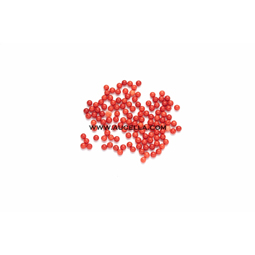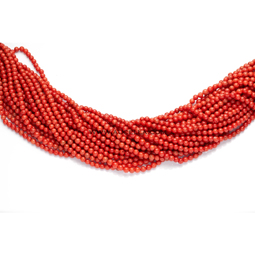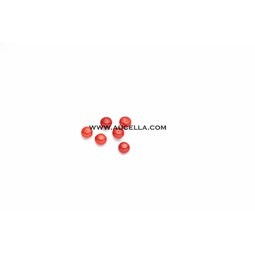Red coral, the most known
22-06-2021 If you think of coral jewelry, the first idea that comes to mind is red coral.
If you think of coral jewelry, the first idea that comes to mind is red coral.As already mentioned in the blog post about coral in jewelry (https://www.aucella.com/blog/fun-facts-on-coral-and-coral-reefs), not all corals is from coral reefs. There are more than seven thousand species of coral in the world.
In Europe, red coral is identified with corallium rubrum, which is the variety of coral found along almost all the coasts of the Mediterranean. It is a very popular red coral.
For more than 200 years red coral has been worked in Torre del Greco, according to ancient processing techniques, which have made the town in the province of Naples unique in the world.
Momo Cerasuolo coral and more
From the Pacific Ocean comes a very popular red coral with a particularly intense color, it is the Cerasuolo coral, otherwise known by the scientific name of Corallium Elatius. To it is added the Moro Japan coral, whose Latin name is corallium Japonicum.
The red coral of the Pacific Ocean has numerous differences compared to the red coral of the Mediterranean Sea, in particular:
- shape, the red coral of the Mediterranean has a different and smaller shape than that of the ocean, because it is collected at a depth between 50 and 100 meters;
- absence of the white spot, typical instead of the exoskeleton of the supporting structure of the Asian red coral;
- well defined color. The only color exception for the red coral of the Mediterranean is represented by the red coral of Sciacca, which has a "burnt" color, typical of the area.
The particular color is due to the high temperatures of the underwater volcanic vents and the presence of "dead" corals that settle in the depths.
It is easy to understand how the red coral of the Mediterranean has a higher value than the Asian types of the same size.
The red coral of the Mediterranean is in fact present in nature with smaller branches and therefore does not easily adapt to every use, unlike the Cerasuolo coral, as for the realization of the statues.
Recognizing the origin of the coral
To recognize the correct origin of red coral, whether it is from the Mediterranean or the Pacific, it is important to evaluate its structure. First of all, the size and type of the object in front of us provides very useful information. For example, if we have a very large coral statue or necklace, it is more than likely that it is Cerasuolo coral, while in the case of a fringed necklace or dome, it is likely that it will be red coral from the Mediterranean.
Another feature that helps to discern its origin is the characteristic white spot, which derives from the white sclerasse of Asian red corals.
All works with Asian coral will inevitably have a white spot on the surface, although the skill of a coral master will be contained precisely in the ability to camouflage such spots.
For example, the stain in the case of spools, buttons or engravings will occur at the bottom, in the case of red coral spheres, the stain will be on the two sides where the holes for threading will then be made, to allow therefore to camouflage this " defect "with simplicity.





Leave a Message
Click here to use Whatsapp